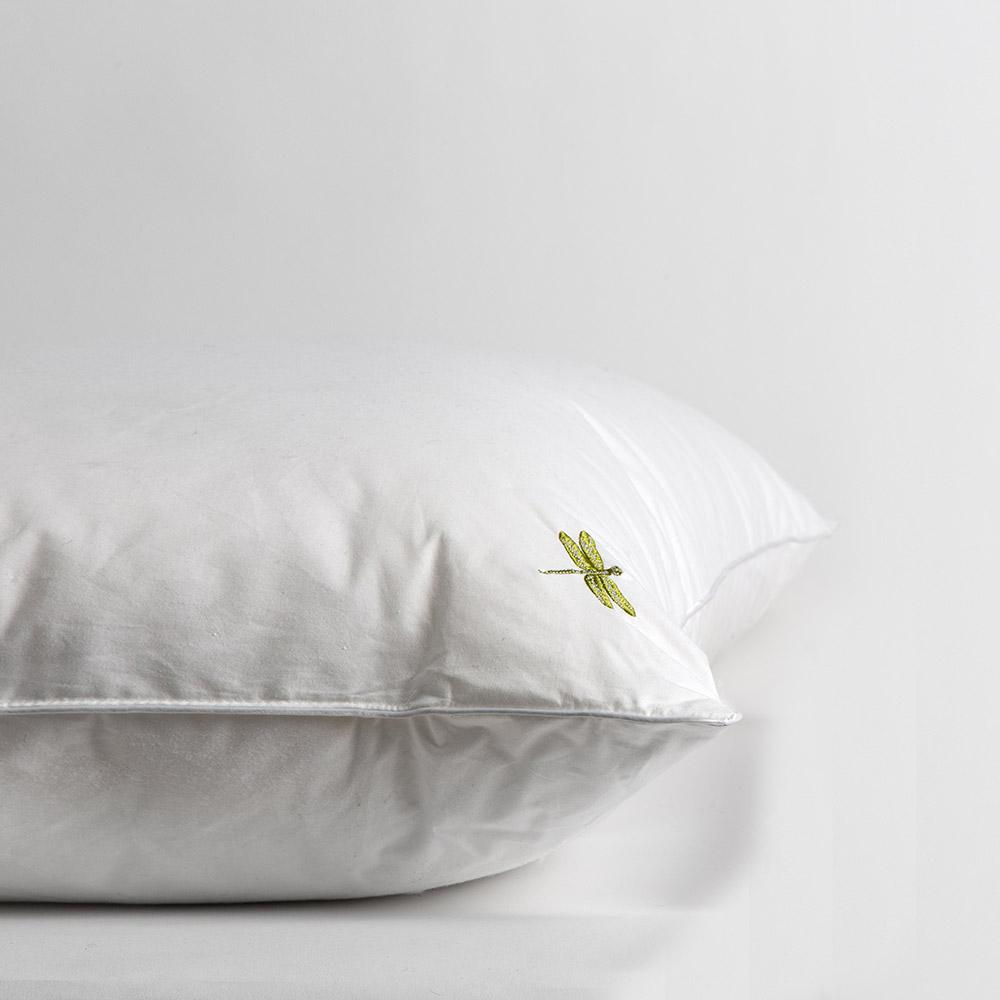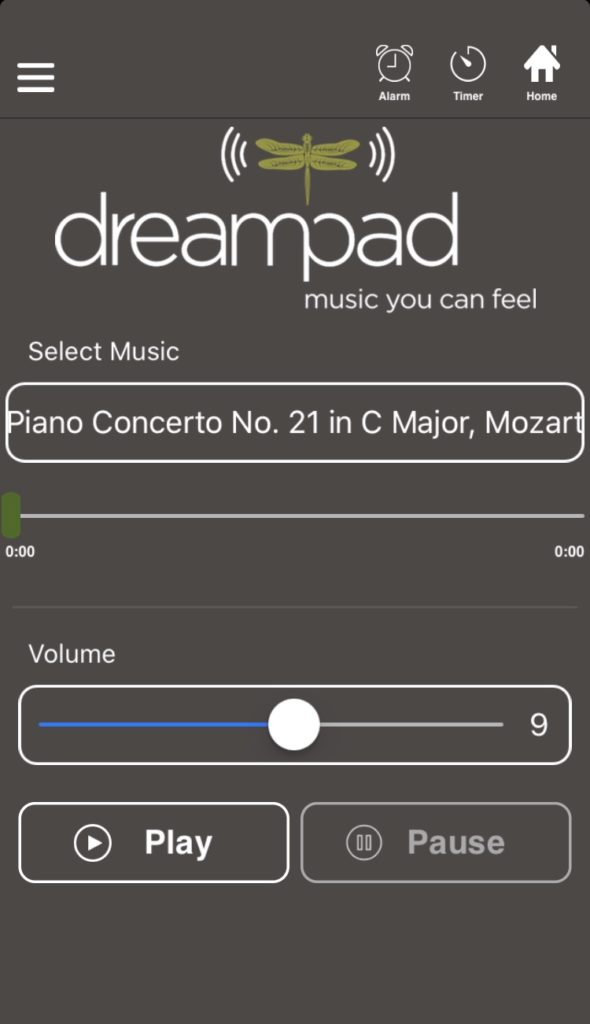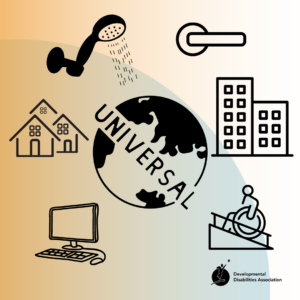Product: Dreampad
Producer: DreamPad
Compatibility: iOS/Android
Cost: $149.00 USD
Product summary:
Dreampad is a high-tech pillow advertised as a sleep aid and sensory solution. Embedded within the pillow is a Bluetooth-enabled intrasound speaker that transmits vibrational sound once paired with the accompanying iOS/Android app. The pillow was designed to allow the user to hear and feel sound without this sound being audible to others. The Dreampad has been part of several research studies and is targeted towards supporting users with dementia, autism, ADHD, and PTSD.
Highlights:
- Soft, comfortable hypoallergenic pillow;
- Bluetooth connection is stable and easily activated once the initial set-up is complete;
- Non-intrusive, gentle sensory stimulation that supports relaxation and sleep;
- Audible only to the direct user and does not require headphones or earbuds which can be uncomfortable for the user to sleep with;
- Speakers are extremely discrete and can not be felt even if the user’s head is placed directly above.
Lowlights:
- Dreampad research studies used a very small (<30) subject pool for testing; data should be evaluated with this in mind;
- Users with vertigo or inner ear conditions may experience nausea and dizziness using the Dreampad and should slowly increase usage over time to minimize these side effects;
- The speakers are very quiet and best suited to side sleepers; users who sleep on their backs may not be able to hear the music;
- Limited music selection (14 tracks); though you are able to play music from your library, the sound quality is extremely poor for tracks outside of the Dreampad app.
Ratings:
Ease of Use: Simple Instructions Helpful ★★★☆☆
Adaptability: Some Personalization Available ★★★☆☆
Accessibility: Broad Range of Users Served ★★★★☆
Cost vs. Value: Expense Greater than Return ★★☆☆☆
Overall Rating: ★★★☆☆
Final word:
The research studies conducted with Dreampad showed varying results. Consistently across all subject pools, Dreampad decreased frequency of nighttime awakenings and perceived quality of sleep – though this data was primarily anecdotal. Dreampad did not consistently increase the amount of sleep, however; several studies – particularly those with child subject groups – did find that there was a decrease in length of time to fall asleep. It is possible to attribute these results to the sensory stimulation provided by the intrasound speakers which support the use of the Dreampad as a sensory integration strategy.
As a speaker-pillow hybrid, it is significantly more comfortable than using headphones but there are limitations in volume levels, sound quality, and music selection. Strictly as a sound production device, these limitations detract from functionality and make the Dreampad a less than ideal choice for users seeking an alternative audio solution. Expansion of the audio library and increased ability to personalize audio output would improve the user experience – this may be possible through the use of third-party apps.
Overall Dreampad is a comfortable pillow that may be appropriate as a sensory solution for some users. Though instructions were needed for initial set-up, those provided were clear and easy to follow. With the right combination of apps, the sound quality could be improved and user experimentation should be encouraged for those who find the sensory stimulation beneficial. Without additional enhancements, Dreampad is an expensive pillow for the base features it provides. For those whose cost is not a limiting factor, Dreampad offers a unique sensory sleep solution and a comfortable place to rest your head.




